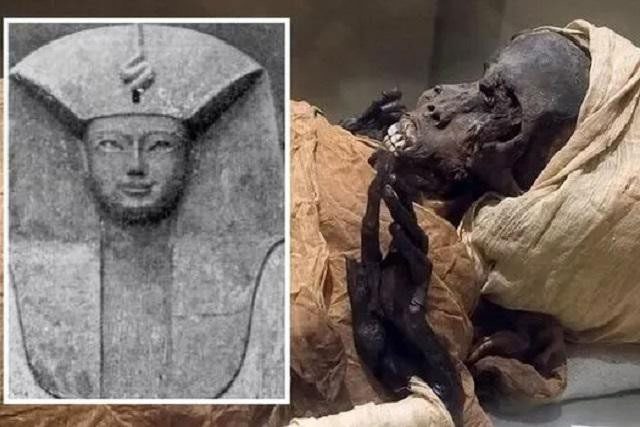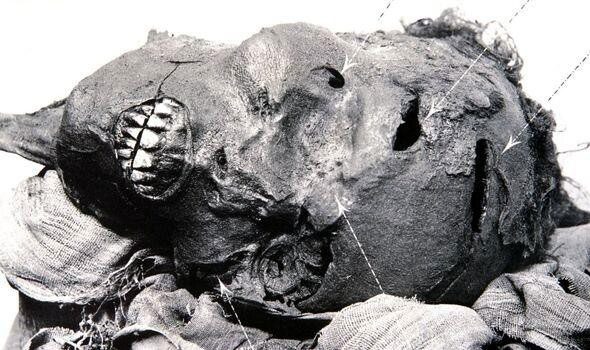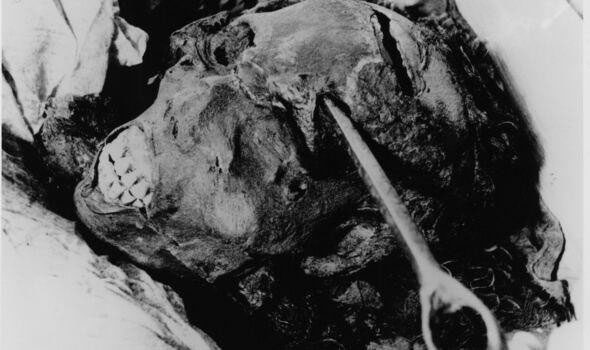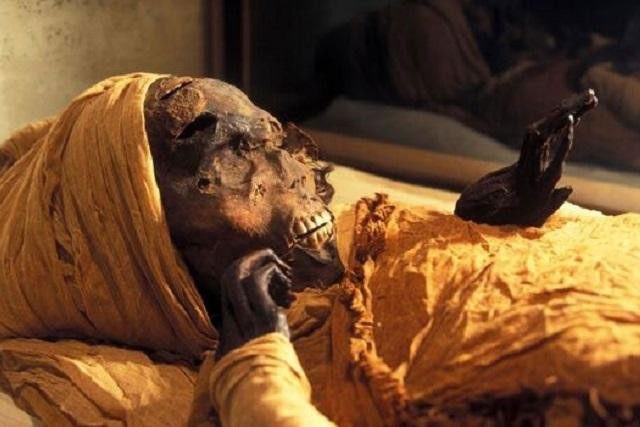Researchers of ancient Egypt were astonished to discover that an Egyptian pharaoh experienced a very violent death, which left his face twisted and grotesque after being “bludgeoned to death.”
According to the Express, ancient Egypt is one of the most captivating civilizations for archaeology. Thanks to archaeological studies, many amazing secrets about the ancient ancestors of the Egyptians have been deciphered. Among the remarkable discoveries about ancient Egypt is a lesser-known pharaoh whose life and death are shrouded in numerous mysteries, attracting the curiosity and exploration of researchers.
Discovered by locals in 1871 and approached by Egyptologists a decade later, Royal Cache is an ancient Egyptian tomb containing the mummies and burial goods of over 50 kings, queens, and other royal members of the New Kingdom of Egypt (a historical period of ancient Egypt that lasted from the mid-16th century BC to the 11th century BC).
Alongside legendary kings such as Ramses the Great and Seti I, this era also included a lesser-known pharaoh whose mysterious life and “violent” death have greatly intrigued archaeologists.
An inscription on the sarcophagus of this pharaoh reads “Seqenenre the Brave”, providing the first clues about how he lived and died.

Pharaoh Seqenenre met a violent, painful death. (Photo Express).
Dr. Richard Shepherd, a world-renowned forensic pathologist specializing in investigating suspicious deaths, stated: “When we look at his face, it is definitely an abnormal face. It is very distorted. The entire nose, right eye, nasal bridge, and left eye are all very misshapen.”
Seqenenre is the only Egyptian pharaoh found with such severe injuries.
Pointing out the horrific injuries on one side of Pharaoh Seqenenre’s head, Dr. Shepherd emphasized: “This is a wound caused by a tremendous external force. His brain was severely bludgeoned, creating this crater-like indentation. This wound seems a bit unusual; I think part of it is due to the bone being shattered, possibly from a weapon that was withdrawn afterward. It caused a fragment of the outer skull to be dislodged.”

The distorted, twisted face of the ancient Egyptian pharaoh. (Photo Express).
Dr. Shepherd attempted to understand how Pharaoh Seqenenre died by conducting a full autopsy, the only one ever performed on the body of Pharaoh Seqenenre.
Previously, an expert named Elliot Smith conducted an autopsy on this Egyptian pharaoh in 1912 and concluded that Seqenenre died from axe wounds sustained in battle.
“Elliot Smith mentioned an ‘axe’ in his report, and I want to confirm that precisely with our current knowledge,” Dr. Shepherd declared.
“When I examined these two wounds, what I can say is that both are lethal injuries. You could even sustain just one of these injuries, and it would be enough to cause death,” he added.

Horrific wounds on the face and forehead. (Photo Express).
The “violent” death of Pharaoh Seqenenre was also described in a book published in 2005 by author Gaston Maspero titled “The History of Egypt, Chaldaea, Syria, Babylonia, and Assyria, Volume 4.”
According to this, author Maspero wrote: “A blow from an axe severed part of his left cheek, exposing teeth, breaking his jaw, and causing him to fall helpless to the ground; another blow severely injured his skull, and a dagger or spear pierced his right forehead, just above the eye. His body must have lain where he fell for some time. When the body was found, the decomposition process had begun, and mummification had to be carried out as quickly as possible.”
Many believe that the head wounds of the pharaoh were inflicted by a Hyksos axe, and the other injuries on his neck were caused by a dagger while he lay dead on the ground.
The absence of wounds on his arms and hands also suggests that this king died without being able to defend himself.
A 2021 CT scan revealed that Pharaoh Seqenenre was in his 40s when he died, and his deformed hands indicated that this pharaoh had been imprisoned with his hands bound.
The facial injuries of Pharaoh Seqenenre closely correlate with Hyksos weaponry, indicating that he may have led military engagements against the Hyksos and died in one of these conflicts.

The mummy of Pharaoh Seqenenre found in the Royal Cache tomb.
During the mummification of Seqenenre, embalmers are believed to have attempted to conceal the king’s wounds. The methods used indicate that the mummification took place in a royal embalming workshop. After Pharaoh Seqenenre fell in battle, the war against the Hyksos continued.
The son and successor of Seqenenre, Wadjkheperre Kamose – the last ruler of the Seventeenth Dynasty at Thebes, is believed to have launched a successful campaign against the Hyksos (who ruled Lower Egypt). However, Pharaoh Wadjkheperre Kamose is also thought to have died in this campaign.
The mother of Pharaoh Kamose – Queen Ahhotep I is believed to have become the ruling figure after her son’s death. She continued the fight against the Hyksos until Ahmose I – the second son of Seqenenre and Ahhotep I was mature enough to take the throne, completing the expulsion of the Hyksos from Egypt and uniting the kingdom.





















































